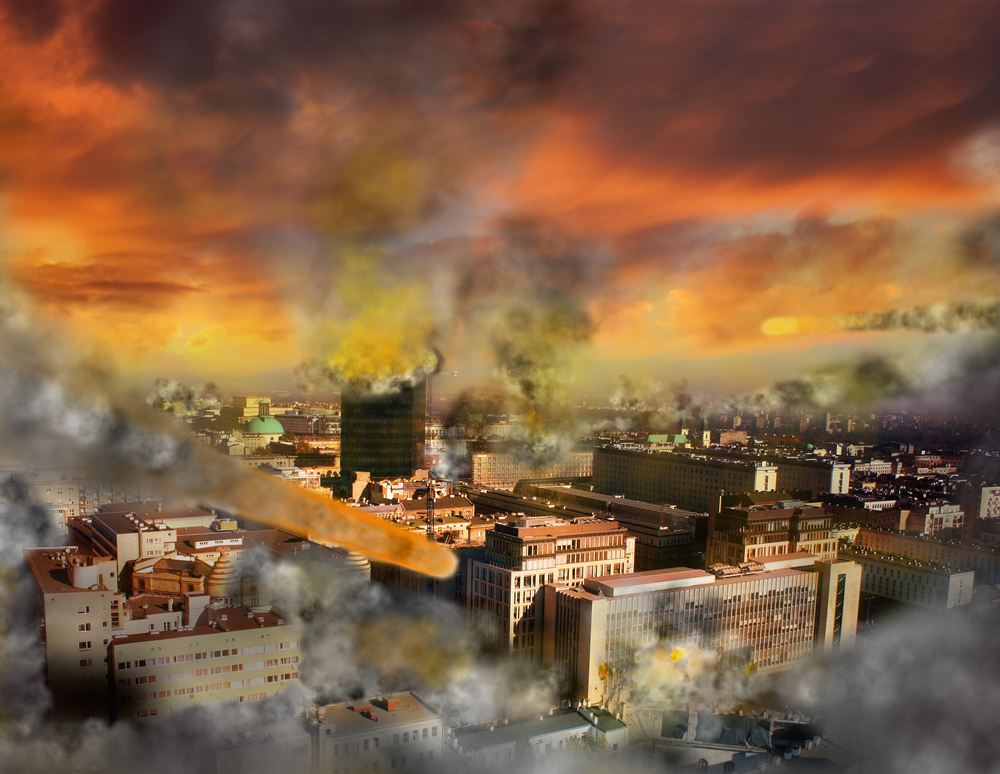
Seven minutes to midnight. Five minutes to midnight. Three minutes to midnight.
Last month, experts with the Bulletin of the Atomic Scientists announced that the "Doomsday Clock," an iconic symbol meant to represent humanity's risk of facing global calamity, was stuck at 3 minutes to midnight, despite a historic climate agreement reached in Paris just a few months earlier. As part of their reasoning, the atomic bulletin scientists cited the nonbinding nature of those Paris climate accords, the rise of hostility between superpowers and the proliferation of more "modernized" nuclear weapons that may be more tempting to use.
But the minute hand of the clock has been stuck just a snack break away from global apocalypse for decades. And the Doomsday Clock now encompasses more than just nuclear threats. [End of the World? Top 10 Doomsday Threats]
Given that, the Doomsday Clock may not be the right tool to mobilize people to actually change things for the better, experts say.
"I don't think that using apocalyptic rhetoric helps us to do the hard work of discussing difficult and complicated issues in a democracy," said Katherine Pandora, a history of science researcher at the University of Oklahoma.
Powerful symbol, muddled message
Originally conceived in 1947 by a cadre of former Manhattan Project physicists, the clock was meant to symbolize how close humans were to nuclear annihilation.
Sign up for the Live Science daily newsletter now
Get the world’s most fascinating discoveries delivered straight to your inbox.
And as a visceral and powerful symbol, it hit the mark.
"All of us have experienced events in our lives when the matter of a few moments could change everything," Pandora told Live Science in an email. "The clock metaphor calls up associations with the gut-level emotional impact of living through those moments and their aftermath, adding to its power as a symbol."
Now, however, the Doomsday Clock represents not just the threat of nuclear annihilation, but also the threat of global climate change, hostile killer robots, malevolent genetic engineering experiments and cyberterrorism. All those threats are legitimately frightening, but with such a grab bag of threats, the symbolism of the clock has been a bit muddied, said Anders Sandberg, a philosopher at the Future of Humanity Institute at the University of Oxford in England.
"It's not an exact measure and it's also combining several things," Sandberg told Live Science. "It was perhaps much easier when they started, when it was just nuclear war, but since then we have gained other existential risks."
From alarm to action
What's more, focusing on the big picture may not be the most effective strategy for getting people to fix the problems. Solving nuclear proliferation is tricky enough; add in forestalling climate change meltdown, and many people feel paralyzed, Sandberg said.
People typically do better with more bite-size challenges. For instance, adding buttons to prevent the accidental detonation of nuclear weapons was a small but significant step in avoiding nuclear war, Sandberg said.
The clock's conflation of current risks is also tricky because it's not really a numerical risk estimate, Sandberg said. And the clock publishers don't explain how they factor in potential future risks, such as artificial intelligence, he added.
"Without the right safeguards, it might be tremendously dangerous," Sandberg told Live Science. "With the right safeguards, it's probably the opposite; it's probably the best things you can imagine: Having smart systems that actually help us."
Persistent panic
The clock may be on target when it depicts how close humanity is to global catastrophe, Sandberg said. But persistently living on the precipice of destruction may inure people to the justifiably scary threats the Bulletin hopes to emphasize, Sandberg said.
"You can't live your life at 3 minutes to midnight," Sandberg said.
Pandora thinks the clock could even be counterproductive.
"Having authorities state that an emergency is at hand is an effective way to gain someone's attention and have them primed to take immediate action, which is the logic behind the clock's minutes-to-midnight gambit," Pandora said. "Asking successive generations of people to sustain a constant sense of emergency is a contradiction in terms. The unintended effects of this directive can impede a successful resolution of the issue at hand and undermine the working relationship between experts and nonexperts."
While the Doomsday Clock itself may not be an effective symbol, that doesn't mean all the work put into creating it is useless, she said.
"It is the prodigious amount of research and analysis that ground the conclusions in the reports that the [Bulletin of the Atomic Scientists] issues that are the real tools for mobilizing discussion among all of us on critical issues," Pandora said.
Follow Tia Ghose on Twitterand Google+. Follow Live Science @livescience, Facebook & Google+. Original article on Live Science.

Tia is the managing editor and was previously a senior writer for Live Science. Her work has appeared in Scientific American, Wired.com and other outlets. She holds a master's degree in bioengineering from the University of Washington, a graduate certificate in science writing from UC Santa Cruz and a bachelor's degree in mechanical engineering from the University of Texas at Austin. Tia was part of a team at the Milwaukee Journal Sentinel that published the Empty Cradles series on preterm births, which won multiple awards, including the 2012 Casey Medal for Meritorious Journalism.









